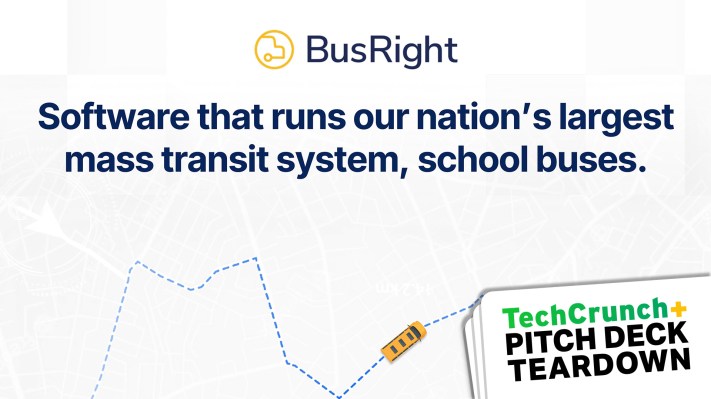As soon as I saw the cover slide for BusRight, I knew I was looking at something really interesting. BusRight is a school-bus management platform that aims to improve efficiency and safety by, among other things, allowing caregivers to track bus locations. It also offers route-mapping and real-time GPS.
Running a school bus network is complex, and in a world where tech savviness is variable, creating tools is crucial. I’m not a parent myself, but I’m going to hazard a bold assumption that, in general, losing kids on the way home from school is pretty unpopular.
Somewhere in that latticework of challenges, there’s an opportunity, which BusRight jumped on. It was then able to grow the product into a business worthy of a $7 million cash injection.
We’re looking for more unique pitch decks to tear down, so if you want to submit your own, here’s how you can do that.
Slides in this deck
- Cover slide
- Go to market slide
- Target audience slide
- Market size slide
- Problem slide
- Solution/product slide
- Traction slide
- Sales process slide
- Business model/unit economics slide
- Testimonials slide
- Sales decision dynamic slide
- Growth projection slide
- Team slide
- Closing/contact slide
Three things to love
BusRight’s pitch deck is well-designed and full of careful touches. Here are some highlights:
Great customer slide
It’s tempting to dive into the unit economics, the growth trajectories and all the ways that the problem is awful and the solution is genius and the product delights. But in the middle of all that, the customer sometimes gets forgotten. For some companies, the customers aren’t a focus and can safely be glossed over. In this case, however, reminding investors whose lives they are helping is a really nice and elegant touch:
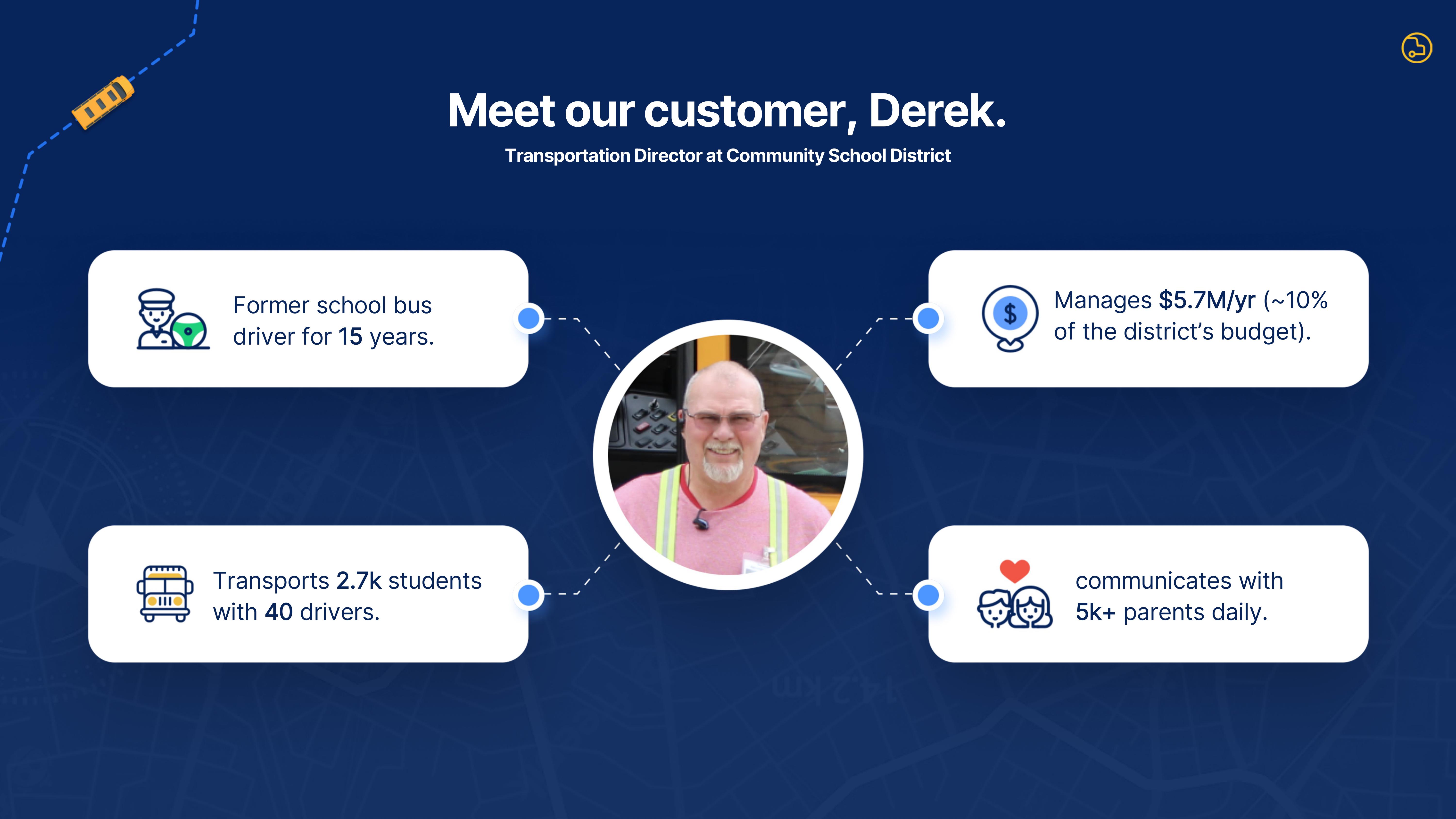
[Slide 3] Hello, Derek. Image Credits: BusRight
Putting upfront why this is a problem worth solving — and who it’s affecting — is a great strategy. The lesson here is to think about the human angle of the story you want to tell.
From the fluffy to the hard-hitting
If you thought the Derek slide was heartwarming, you’re not alone. But if you’re an investor, your next logical question is likely: “How many Dereks are there?” Almost presciently, BusRight answers that exact question on the very next slide:
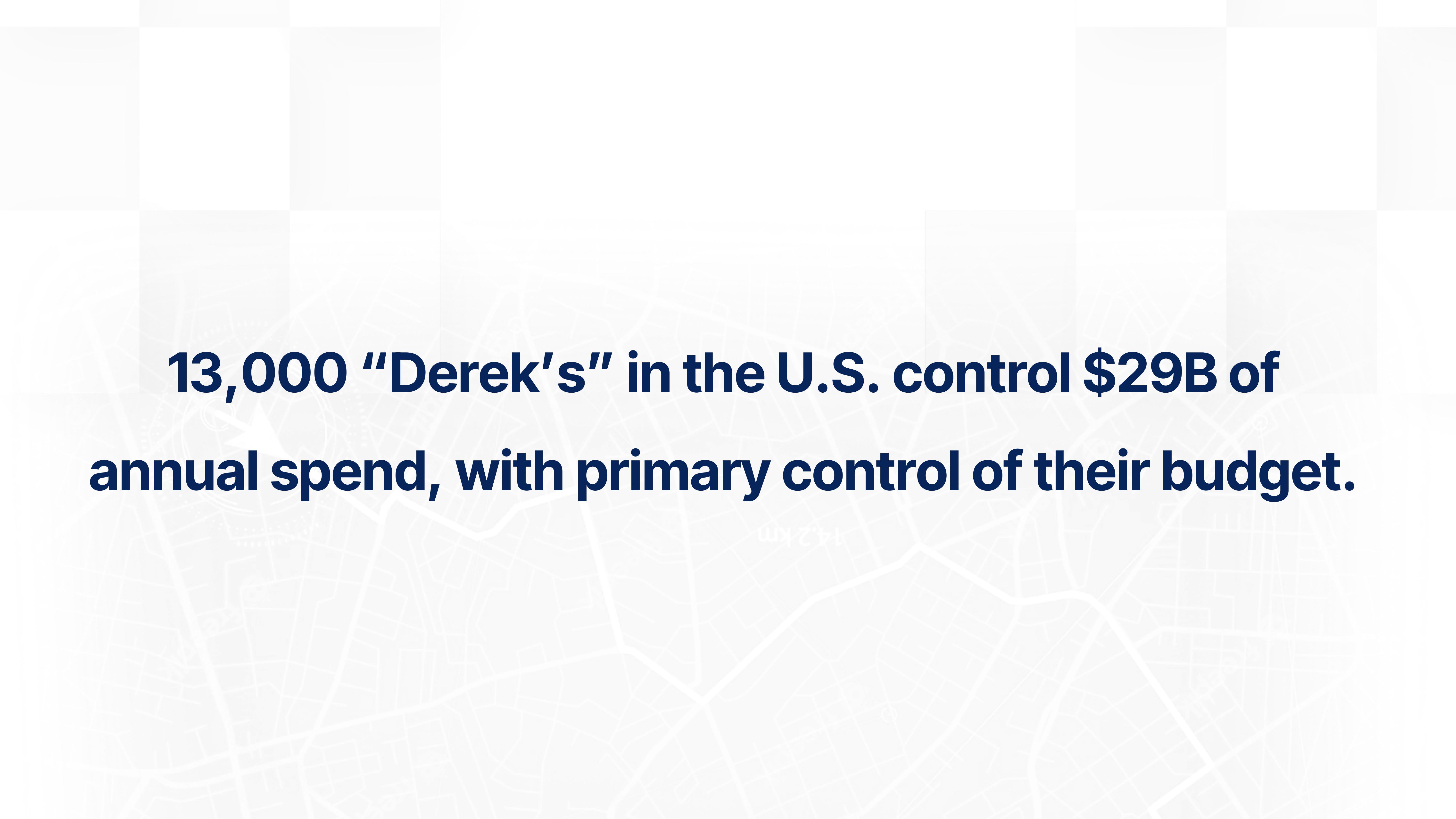
[Slide 4] Maximum Derek! Image Credits: BusRight
Insert chef’s kiss here.
Wait, I’m in charge of this article. I can insert a literal chef’s kiss. I love my job.

Carlton Carlson’s chef’s kiss from the Simpsons. Image Credits: “The Simpsons”
Win/win/win — and maybe win?
Illustrating how the BusRight product is a win all around for kids, parents, bus drivers and the machinery that powers everything helps plant a seed that this might be a win for investors, too. Very well done:
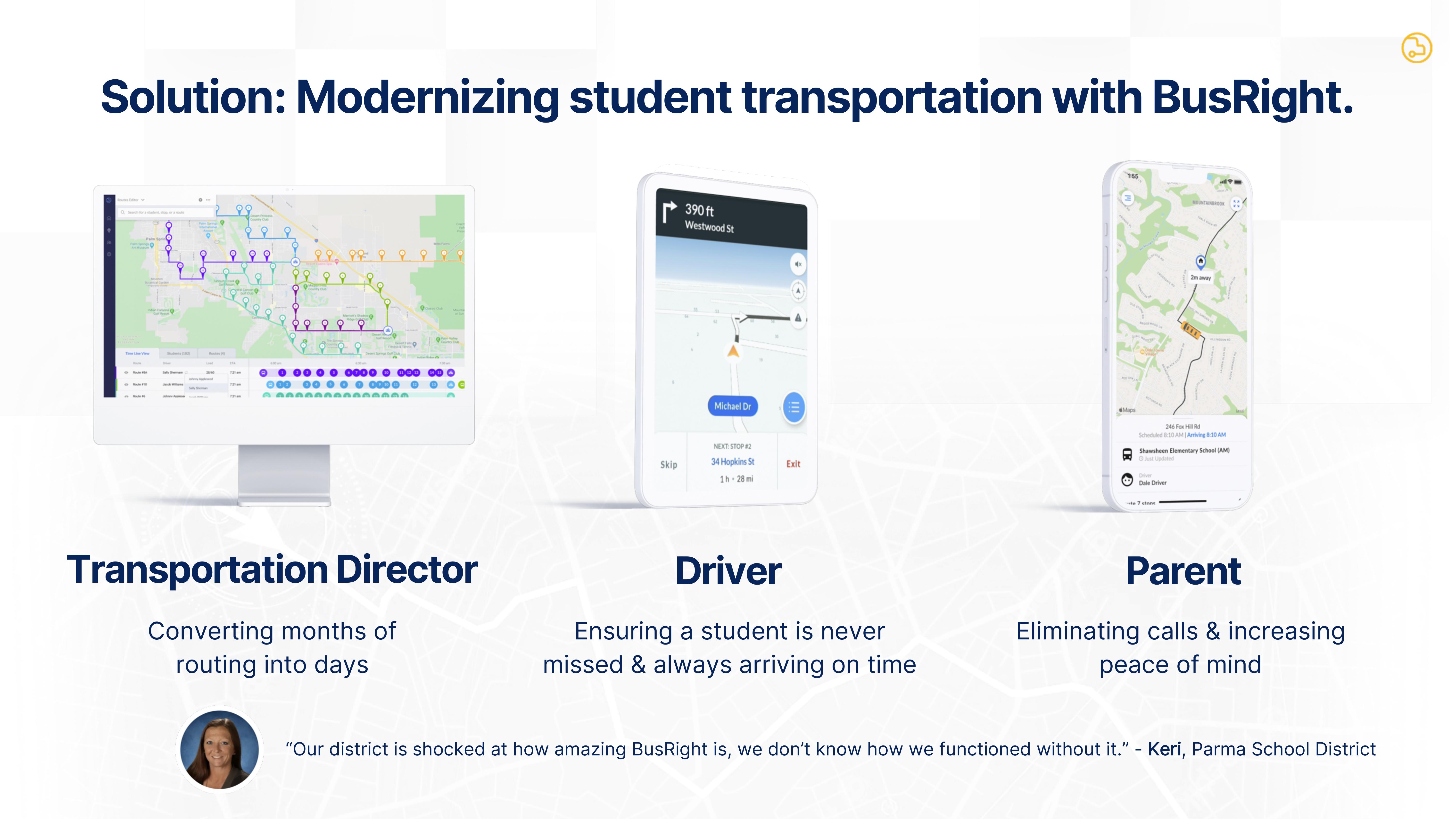
[Slide 6] Bussin’ a move. Image Credits: BusRight
In the rest of this teardown, we’ll take a look at three things BusRight could have improved or done differently. The first few slides are great, but the company made some pretty big goofs along the way, too, so there’s plenty to learn from. I’m also including the full pitch deck, so you can get the full example!
Three things that could be improved
A lot of the time, the problem with a pitch deck isn’t what is there; it’s what is missing. There’s a checklist I use when evaluating decks for my pitch coaching clients, and BusRight left out some pretty significant information, and I imagine investors weren’t happy about that.
Missing info
Among other things, the deck is missing “the ask,” or how much the company is asking for. To be fair, 99% of founders get this wrong, but it’s still a glaring error, made worse by the fact that there isn’t a clear “use of funds” slide. I like to think of fundraising as staged de-risking: Why are you raising money? Yes, growth, probably, but a deck really needs to have a clear plan for the $7 million injection. If not, I’d question the quality of the founders: Does this mean they don’t know what the money would be used for?
There’s also no sign of financials or an operating plan or a sense of why now is the best time to tackle the problem. The other missing piece is whether the company has a meaningful moat of any sort: What is stopping would-be competitors from outrunning the company to market?
The competitive landscape, in particular, is an interesting omission. To my surprise, Forbes has an article titled “Best School Bus Routing Software of 2023,” and BusRight isn’t on that list. That’s not great; you can bet your last dollar that VCs will be doing the same Google search I did. The slide’s omission is going to cause some potentially terse conversations.
A little desperate, perhaps?
A significant part of the deck is devoted to how BusRight converts customers. I’d expect to see some of that in a pitch deck, but slides 2, 7, 8 and 11 all tackle similar parts of the story. The founders probably thought that focusing on conversions would reassure potential investors, but it has the opposite effect: Clearly, this part of the narrative warrants a lot of attention, which also means that the investors will be focusing on this a whole lot. In effect, it’s like pointing a searchlight on what may turn out to be the biggest weakness in the business growth plan.
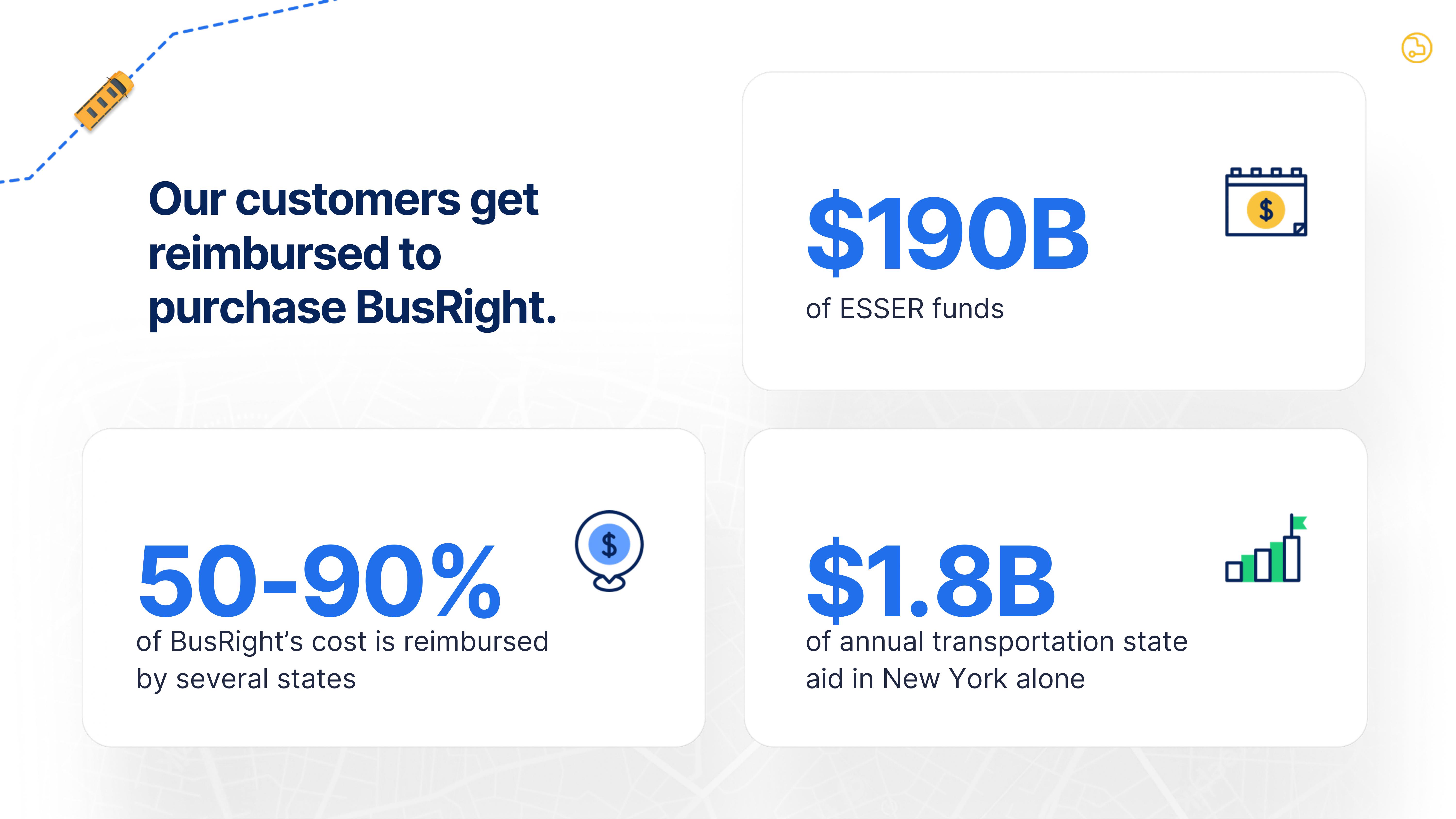
[Slide 11] What the government giveth, the government can taketh away. Image Credits: BusRight
In short: Be prepared for questions, but you don’t have to wave potential problems in front of investors.
Why this team?
Team slides. Super important. At the growth stage, you get away with a poor team slide to some degree, and I suspect that’s why this slide is at the very end of the deck. But take a closer look and think about what you see here:
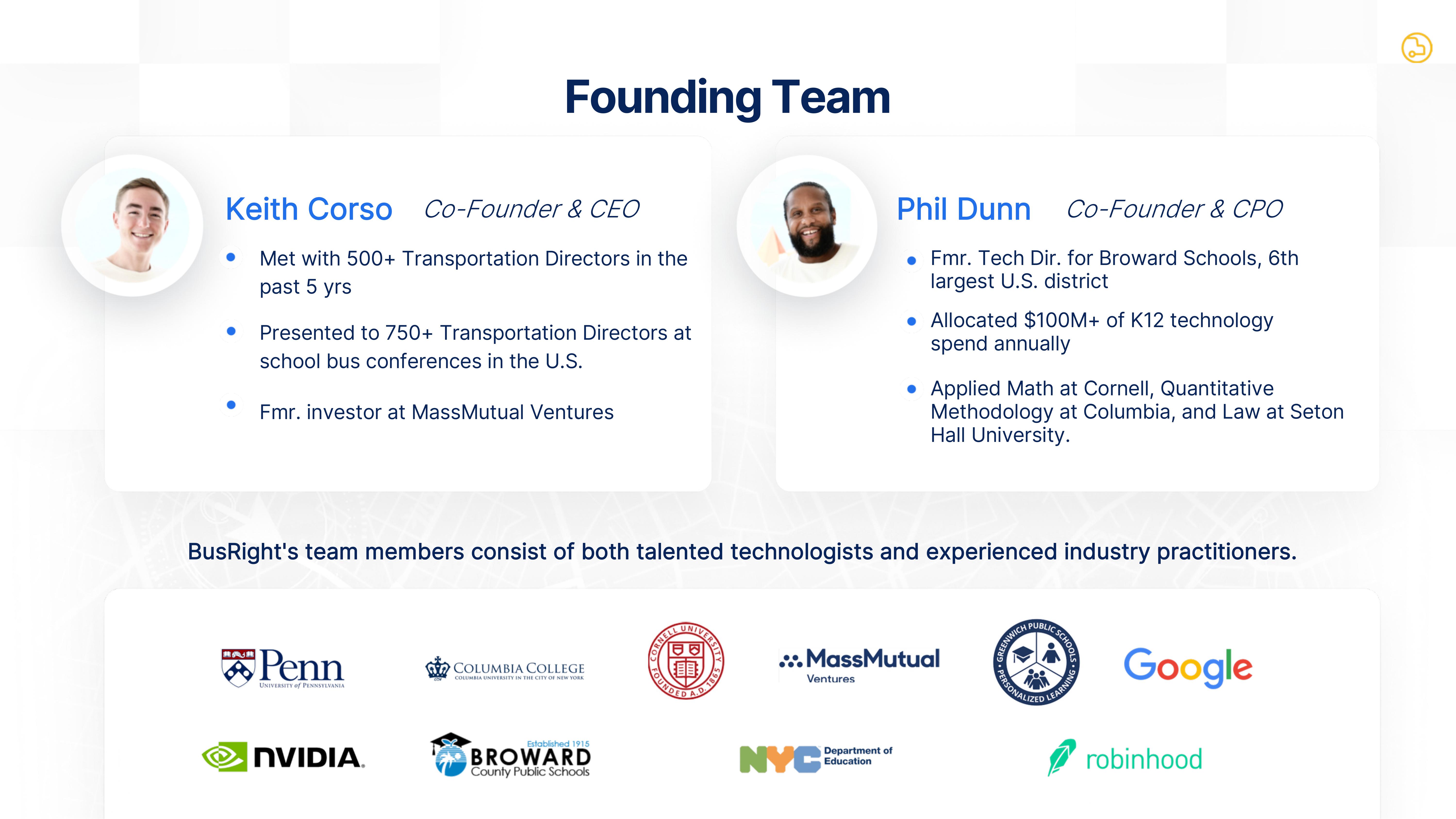
[Slide 13] Burying the team slide at the end isn’t great. Image Credits: BusRight
The cloud of logos at the bottom is distracting. Why is Google, Robinhood, Nvidia listed there? Is that related to the founders? The broader team? What did they do at these companies? If it’s relevant, tell the stories. And if it isn’t directly relevant, why are the logos there? The way this is presented feels a little bit disjointed.
The full pitch deck
If you want your own pitch deck teardown featured on TC+, here’s more information. Also, check out all our Pitch Deck Teardowns and other pitching advice, all collected in one handy place for you!
